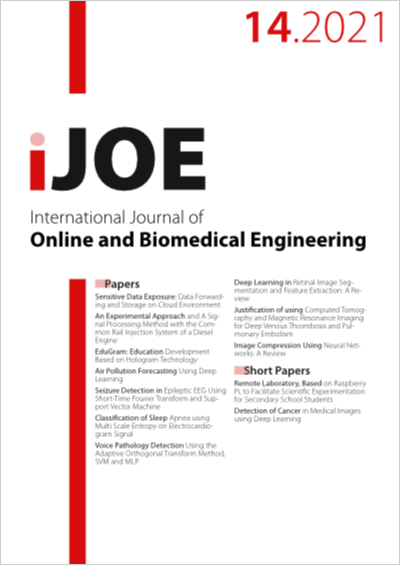Justification of using Computed Tomography and Magnetic Resonance Imaging for Deep Venous Thrombosis and Pulmonary Embolism
DOI:
https://doi.org/10.3991/ijoe.v17i14.26577Keywords:
computed tomography (CT), magnetic resonance imaging (MRI), deep vein thrombosis, pulmonary embolism (PE), angiographyAbstract
Deep vein thrombosis (DVT) is a medical condition, occurs when a blood clot forms in a deep vein and pulmonary embolism (PE) occurs when a blood clot gets lodged in an artery in the lung, affecting blood flow to part of the lung.The frequencies of using computed tomography (CT) and magnetic resonance imaging (MRI) to diagnose deep venous thrombosis and pulmonary embolism is increasing day by day.
Both the technics are noninvasive and provide prompt results. But there are a good number of alternative technics for the same purposes. That is why, till now scholars and respective professionals are interested to know more about the justification and comparative effectiveness of CT and MRI in detecting DVT and PE.
This review aimed to analyze the history of several detecting methods for DVT and PE and to dig out the clear concepts about the effectiveness and patient compliances of CT and MRI in detecting deep venous thrombosis and pulmonary embolism. For proper analysis a lot of research as well as meta-analysis had been studied.
From this article besides scholars and professionals, general readers will get a clear concept about the features, effectiveness and justifications of CT and MRI in treating DVT and PE.
Downloads
Published
How to Cite
Issue
Section
License
Copyright (c) 2021 Petro Bodnar, Yaroslav Bodnar, Tetiana Bodnar, Liudmyla Bodnar, Dymytriy Hvalyboha

This work is licensed under a Creative Commons Attribution 4.0 International License.



